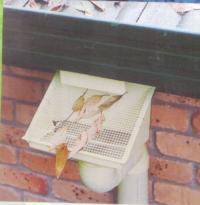RWH Technology
Methods of RWH can be divided according to the purpose and the source of collecting water. Two sources or catchments of harvesting of rain water are there, namely Rooftop harvesting and Runoff harvesting.
Sources or catchments of harvesting Rain Water
Two sources or catchments of harvesting of rain water are there, namely Rooftop harvesting and Runoff harvesting.
- Rooftop Harvesting – In this method, catchments area is the rooftop both in rural and urban areas. Rooftops of houses (both in rural and urban areas) flats, factories or office complexes (in urban areas) which have impervious roofs are the sources of rainwater. This is the major component of collecting water in RWH.
- Runoff Harvesting – Gardens, driveways, landscapes, open fields, parks, roads and pavements and other open areas of the environment can be used to harvest the rain water runoff. Using this method, it is possible to collect water from a larger area. This is particularly advantageous in areas of low rainfall. In a rural area this water can be used for agricultural purposes with the collection tank made of impermeable material. Where agriculture or gardening is not practical in an urban area, the runoff water can be used to recharge ground water by directing water in to a pit or hole and allowing it to recharge ground water. The soil will be able to filter the impurities and the water will recharge ground water.
General components of a harvesting system
A typical RWH system in both rural and urban environment has following components, which are described below.
1. Catchment
Catchment is the area where rain water is collected. This can be the roofs in a rooftop RWH system and the driveway, landscape or any other surface in a runoff system.
 |  |
| Sloping roof | Drive ways or car park |
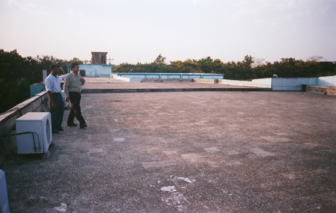 |  |
| Terrace roof | Turf area |
2. Gutters and Pipes
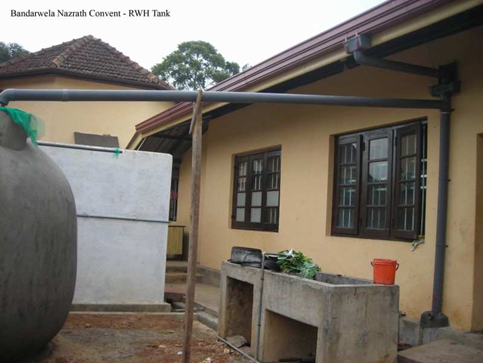 | 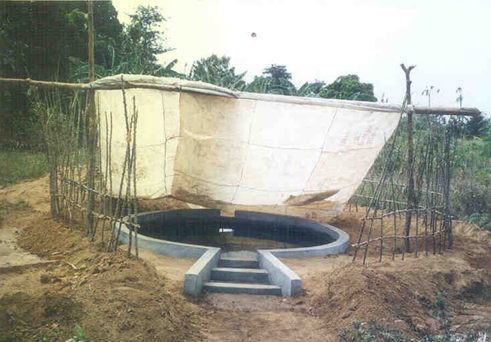 |
| Gutters and pipe in a roof water harvesting system | Run off collection system |
In a roof top system gutters and pipes are used to collect and transport water to the storage tanks. These should be properly supported and sufficiently strong to carry and keep loaded water during the heaviest rain. These pipes and gutters can be made of PVC or metal, but PVC is the widely used. In a runoff system the need of gutters and pipes are a minimum as water is collected at the ground level.
3. Filters
Filters are used to filter out the debris that comes with the rooftop water and prevent them being added to the storage tank. There are various filter devices, which must be chosen according to the purpose of using harvested rain water.
3.1 Mesh filters – a wire mesh fixed at the mouth of or on the down pipe to prevent leaves and debris from entering the system
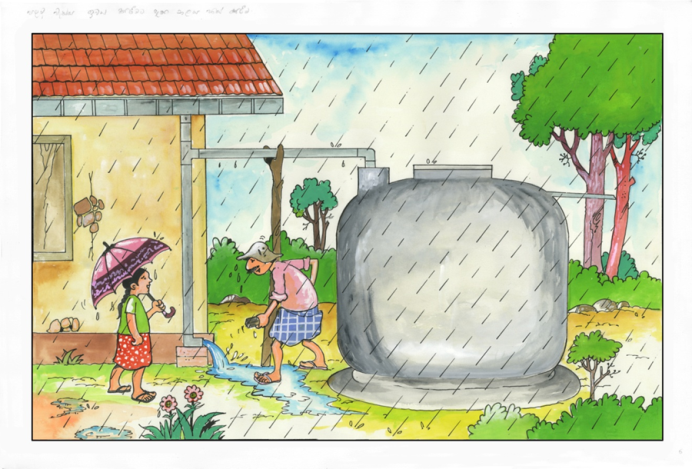
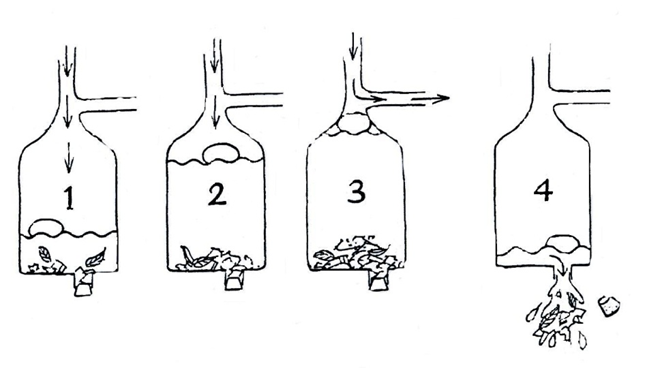
3.2 First-flushing devices – first flush device is a valve that ensures the runoff from the earliest rains are flushed out and does not enter the system. (The first rains carries relatively larger amount of pollutants and dust from the air and catchment surface)
3.3 Sediment discharge tap – this is used in the bottom of storage tank, to flush out the sediments settled on the bottom of the tank.
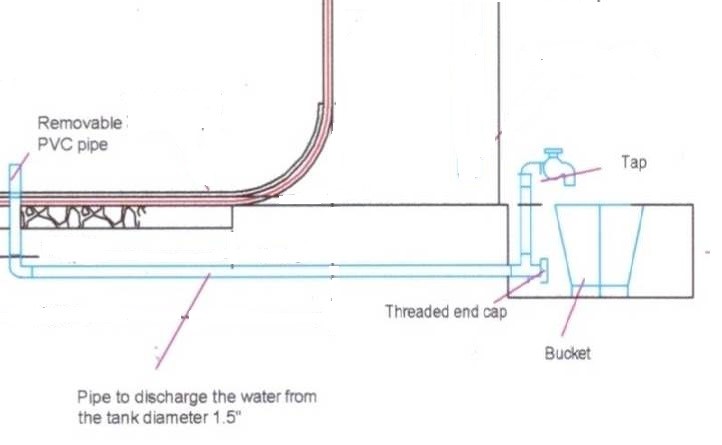
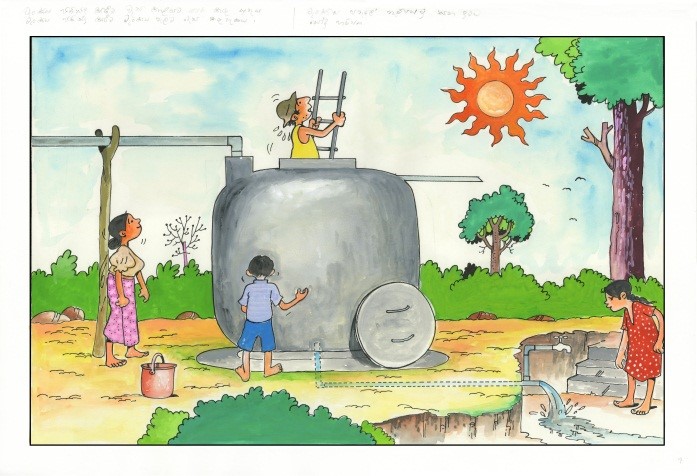
If water is used for drinking purposes specially designed filters are used. Sand filters and charcoal filters are some examples. Maintaining of these filters in a good condition is essential.
Gutter filter
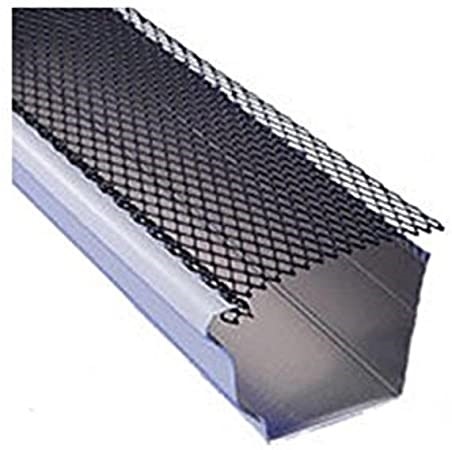
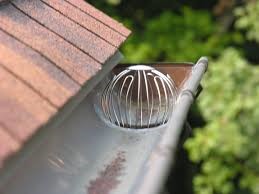
Tank filter
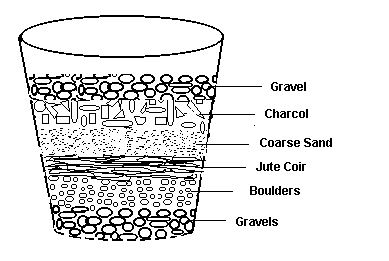
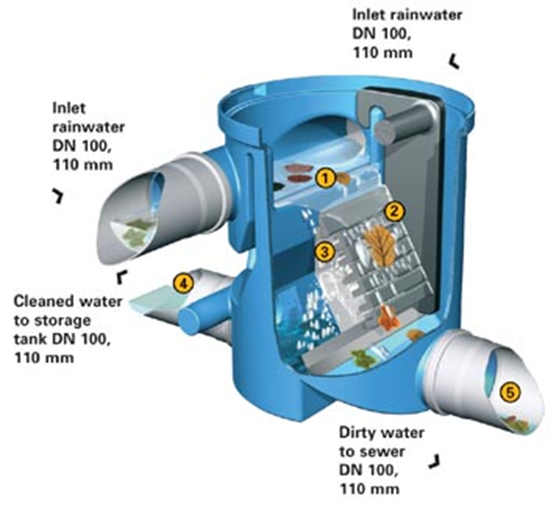
4. Storage facility
Storage tank can be stationed above or under ground. An open well can also be used for recharging the ground water. This storage facility can be varied according to the following criteria.
4.1 Shape – Cylindrical, rectangular hexangular and square.

4.2 Material of construction – Reinforced cement concrete, (RCC), Ferro cement, masonry, plastic (polyethylene) or metal (galvanised iron) sheets
4.3 Position of tank – Above ground, partly underground, fully underground.

In a runoff system, water can be directed to a well, pit or trench where water is charged in to the groundwater. Existing wells, pits and ponds can be modified as recharge structures.
The volume of the storage tank can be determined by the following factors:
- Average annual rainfall – if the rainfall intensity is high, a large tank is needed.
- Period of water scarcity – if the rainfall pattern is evenly distributed throughout the year the tank can be smaller and if the rain is confined to few months or weeks, tank should be a larger one.
- Type and size of the catchment – if the catchment area (eg. rooftop) is larger, the size of the required tank should be larger too.
- Water requirements – what are the uses of harvested water.
- Number of persons in the household – if the number of persons using water is high a larger tank should be stationed.
5. Devices to Draw water out
Devices such as hand pumps, motorised pump or tap can be used to pump water from these storage tanks and recharge tanks to the points where water is used. The device depends on the position of the tank and the use of water.

